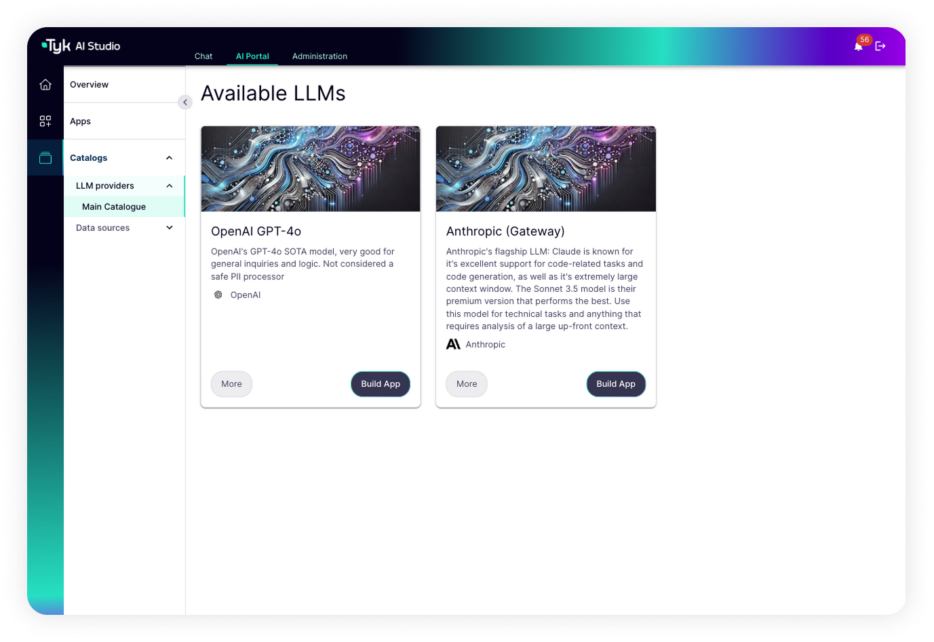
Best API Management Tools in 2025: A Developer’s Perspective
Table of Contents
Introduction: Why API Management Still Matters in 2025
APIs are the invisible glue of modern software. From fintech apps connecting to payment gateways to e-commerce stores fetching product recommendations via ML APIs—APIs enable everything.
But with great connectivity comes great complexity. By 2025, companies aren’t just publishing a handful of APIs—they’re managing hundreds, sometimes thousands, across microservices, cloud regions, and even hybrid environments.
That’s where API management tools come in. They help developers, architects, and businesses secure, scale, and monetize APIs without losing their minds.
Yet, not all API management platforms are equal. Some are lightweight and open source, others enterprise-grade with price tags to match. And developers aren’t shy about sharing their frustrations—or love—for these tools.
In this guide, we’ll break down the top API management platforms in 2025, compare them in detail, sprinkle in real developer voices, and give you a clear roadmap for choosing the right one.
What Is API Management?
At its core, API management is about controlling the lifecycle of APIs:
- Design → Build consistent, documented APIs.
- Security → Handle authentication, rate limits, and compliance.
- Monitoring → Track performance, uptime, and usage.
- Scaling → Support millions of requests with caching and load balancing.
- Monetization → Package APIs into products for internal or external use.
How API Management Works
Here’s a simplified version to visualize API management flow:
API Management Lifecycle
Key Criteria to Compare API Management Tools
Before diving into the top tools, here are the criteria developers care about:
- Ease of Use → Does it integrate smoothly with frameworks (Next.js, Spring Boot, etc.)?
- Security Features → Does it support OAuth2, JWT, mTLS, rate limiting?
- Scalability → Can it handle millions of requests per minute?
- Cost Structure → Is it open source, pay-per-call, or enterprise licensing?
- Community Support → Are developers happy, frustrated, or abandoning it?
Best API Management Tools in 2025
1. Kong API Gateway
Type: Open source + enterprise options
Kong remains the go-to for developers who want flexibility without vendor lock-in. Built on NGINX, it’s blazing fast and supports plugins for authentication, logging, monitoring, and transformations.
- Strengths:
- Lightweight and open source
- Active community
- Great plugin ecosystem
- Weaknesses:
- Steeper learning curve
- Some enterprise features locked behind Kong Konnect
💬 Developer perspective (HN): “Kong works beautifully for microservices. Once you set it up, it feels like magic, but expect some pain in configuration.”
If you want more details with more enhanced version then download the pdf below:
Download for Free!
2. Google Apigee X
Type: Enterprise SaaS
Apigee is a long-time leader. With Apigee X, Google Cloud brings machine learning–driven monitoring, predictive scaling, and API monetization features.
- Strengths:
- Strong analytics and ML-powered insights
- Excellent enterprise support
- Developer-friendly API portal builder
- Weaknesses:
- Expensive for small teams
- Vendor lock-in with GCP
💬 Dev on Reddit: “Apigee is fantastic at scale, but the price tag made us switch to Tyk.”

3. Tyk
Type: Open source + enterprise
Tyk positions itself as the developer-friendly API gateway. It’s popular among startups who want open-source flexibility with the option to scale later.
- Strengths:
- Great documentation
- Low overhead deployment
- Transparent pricing
- Weaknesses:
- Lacks polish in enterprise UI
- Smaller ecosystem vs Kong

4. WSO2 API Manager
Type: Open source
WSO2 is feature-rich, with a strong focus on identity and access management. It’s often used by financial institutions where compliance is key.
- Strengths:
- Enterprise-grade security
- Open source with commercial support
- Weaknesses:
- Heavy to deploy
- Learning curve is steep
5. MuleSoft Anypoint Platform
Type: Enterprise SaaS (owned by Salesforce)
MuleSoft is dominant in large enterprises with hybrid cloud environments. If you’re already in the Salesforce ecosystem, MuleSoft is almost a default choice.
- Strengths:
- Robust integrations
- Great for complex enterprise environments
- Weaknesses:
- High cost
- Overkill for startups
6. Postman API Platform
Type: SaaS (freemium)
Useful Links
- How to Secure Your APIs Without Sacrificing Performance in 2025
- The Rise of Backend-for-Frontend (BFF) Architecture in 2025
- Build vs. Buy: How Developers Decide on AI Tools in 2025
- Developers vs AI-Generated Code: When Should You Trust the Machine More?
- Top 10 Mistakes Developers Still Make (and How to Avoid Them)
- Rust in 2025: Why Developers Are Choosing It for Web and System Development
Once just an API testing tool, Postman is now a collaboration-first API platform. It’s not a traditional gateway but offers API lifecycle management—design, mocking, monitoring, and collaboration.
- Strengths:
- Ubiquitous among developers
- Great team features
- Weaknesses:
- Not a full gateway
- Scaling requires external tools
7. AWS API Gateway
Type: Cloud-native
Amazon’s gateway is perfect for serverless architectures. If you’re already building with Lambda or DynamoDB, AWS API Gateway integrates seamlessly.
- Strengths:
- Native AWS ecosystem integration
- Pay-per-use pricing
- Weaknesses:
- Costs can balloon unexpectedly
- Steep setup for advanced use cases
8. Azure API Management
Type: Cloud-native
Microsoft’s API management tool excels in hybrid environments, especially for enterprises already using Azure.
- Strengths:
- Strong developer portal
- Enterprise integrations
- Weaknesses:
- Slower release cycles vs GCP/AWS
9. IBM API Connect
Type: Enterprise SaaS
IBM focuses on regulated industries like banking and healthcare. If compliance is non-negotiable, API Connect is strong.
- Strengths:
- Powerful security
- Enterprise-grade monitoring
- Weaknesses:
- Legacy feel in UI
- Cost is high
Comparison Table: Best API Management Tools 2025
Here’s a s table comparing key aspects:
| Tool | Type | Best For | Weakness |
|---|---|---|---|
| Kong | Open Source + Enterprise | Microservices, flexibility | Learning curve |
| Apigee X | Enterprise SaaS | Large scale enterprises | Expensive |
| Tyk | Open Source + Enterprise | Startups, dev-friendly | Smaller ecosystem |
| MuleSoft | Enterprise SaaS | Hybrid enterprises | High cost |
Real-World Case Studies
- Netflix → Uses Zuul and custom gateways for streaming APIs. Their focus: low latency, scalability.
- Shopify → Built a custom API management layer for 3rd-party apps, balancing monetization and developer trust.
- Stripe → Famous for API-first design, relies heavily on observability + rate limits to prevent abuse.
💬 Developer (Dev.to): “Stripe is the gold standard. Their API docs and management approach should be a case study in itself.”
When to Use vs When NOT to Use Headless API Management
Sometimes developers over-engineer. If you’re a startup with 2 APIs, a full enterprise platform like Apigee is overkill. Conversely, if you’re an enterprise with thousands of endpoints, relying only on Postman will be a disaster.
Pro tip: Match complexity to your stage.
FAQs
Q1. Which API management tool is best for startups?
Tyk or Kong (open source first, scale later).
Q2. What’s the cheapest option for small businesses?
AWS API Gateway (pay-per-call) or open-source Kong.
Q3. Which tools are best for enterprises?
Apigee X, MuleSoft, IBM API Connect.
Q4. Can Postman replace a full API gateway?
No. It’s a collaboration platform, not a traffic manager.
Q5. How do I choose the right API management tool?
Start with your scale, security needs, and budget. Avoid over-engineering.
Conclusion
API management in 2025 is no longer optional—it’s the backbone of secure, scalable software. Whether you’re building a two-person startup or managing enterprise-scale microservices, the right tool can save you from compliance nightmares, downtime, and runaway costs.
From Kong’s flexibility to Apigee’s enterprise muscle to Postman’s collaboration focus, the ecosystem is rich with choices.
👉 My recommendation: start lean, scale smart. Developers who pick wisely end up saving time, money, and frustration.

🚀 Let’s Build Something Amazing Together
Hi, I’m Abdul Rehman Khan, founder of Dev Tech Insights & Dark Tech Insights. I specialize in turning ideas into fast, scalable, and modern web solutions. From startups to enterprises, I’ve helped teams launch products that grow.
- ⚡ Frontend Development (HTML, CSS, JavaScript)
- 📱 MVP Development (from idea to launch)
- 📱 Mobile & Web Apps (React, Next.js, Node.js)
- 📊 Streamlit Dashboards & AI Tools
- 🔍 SEO & Web Performance Optimization
- 🛠️ Custom WordPress & Plugin Development







